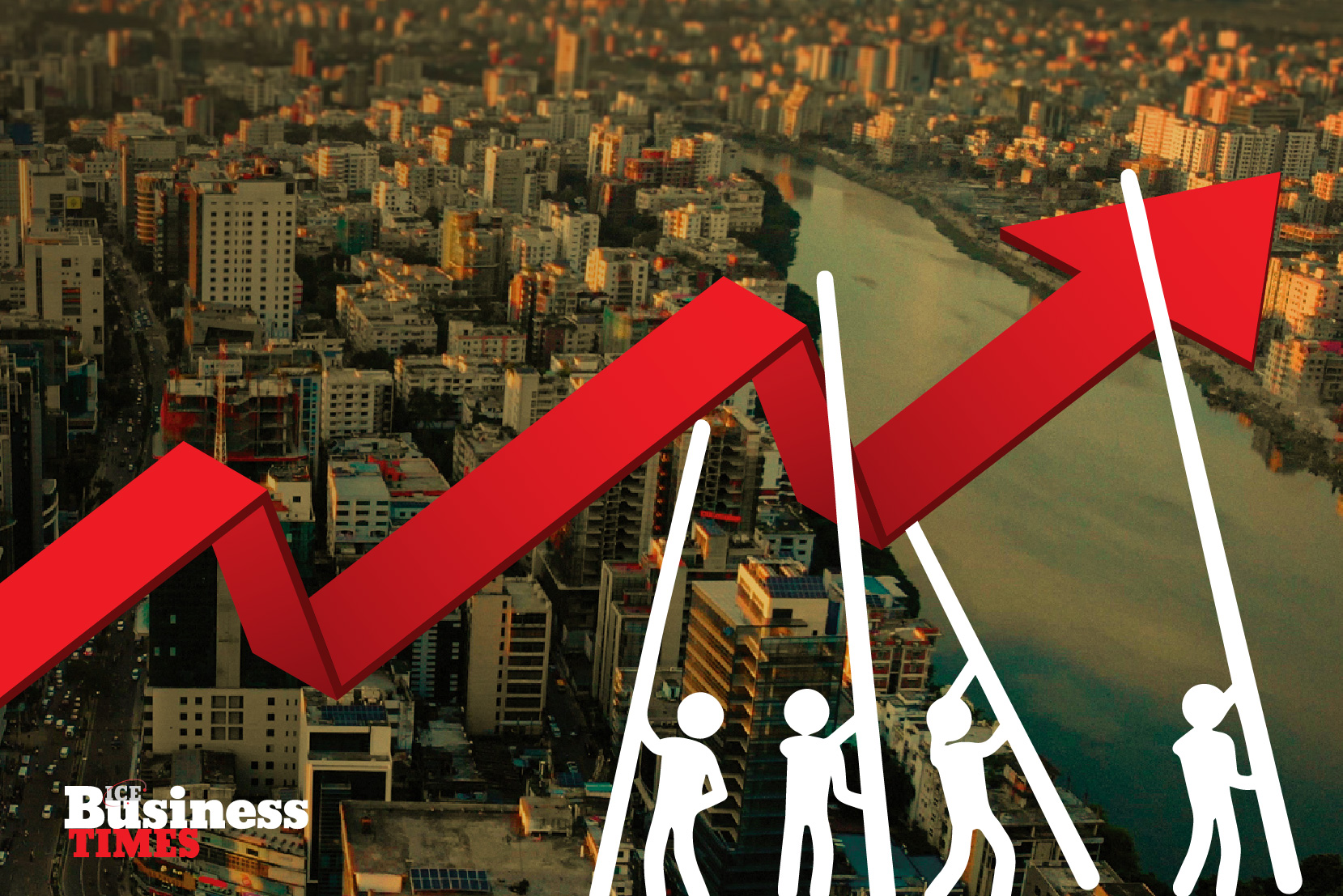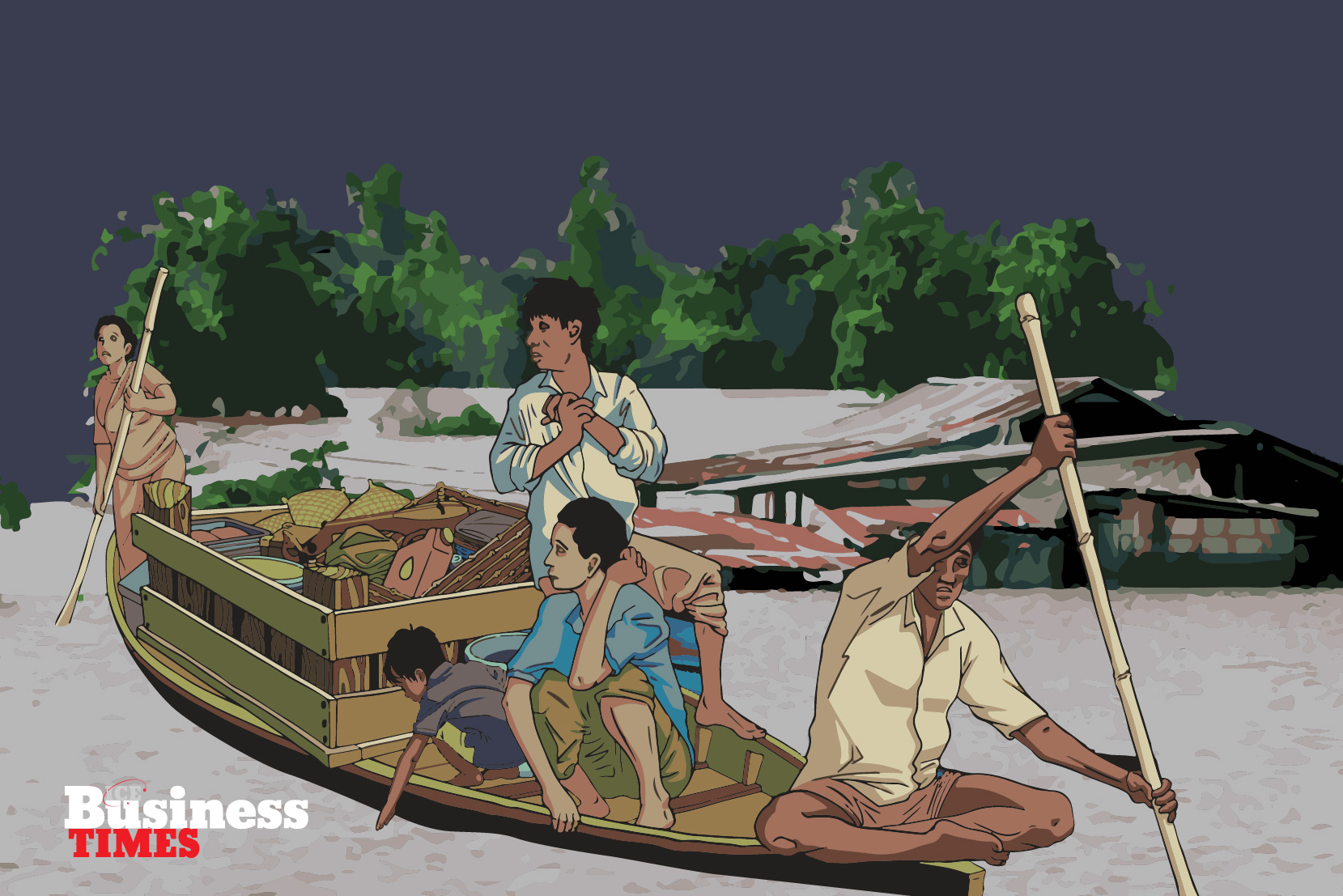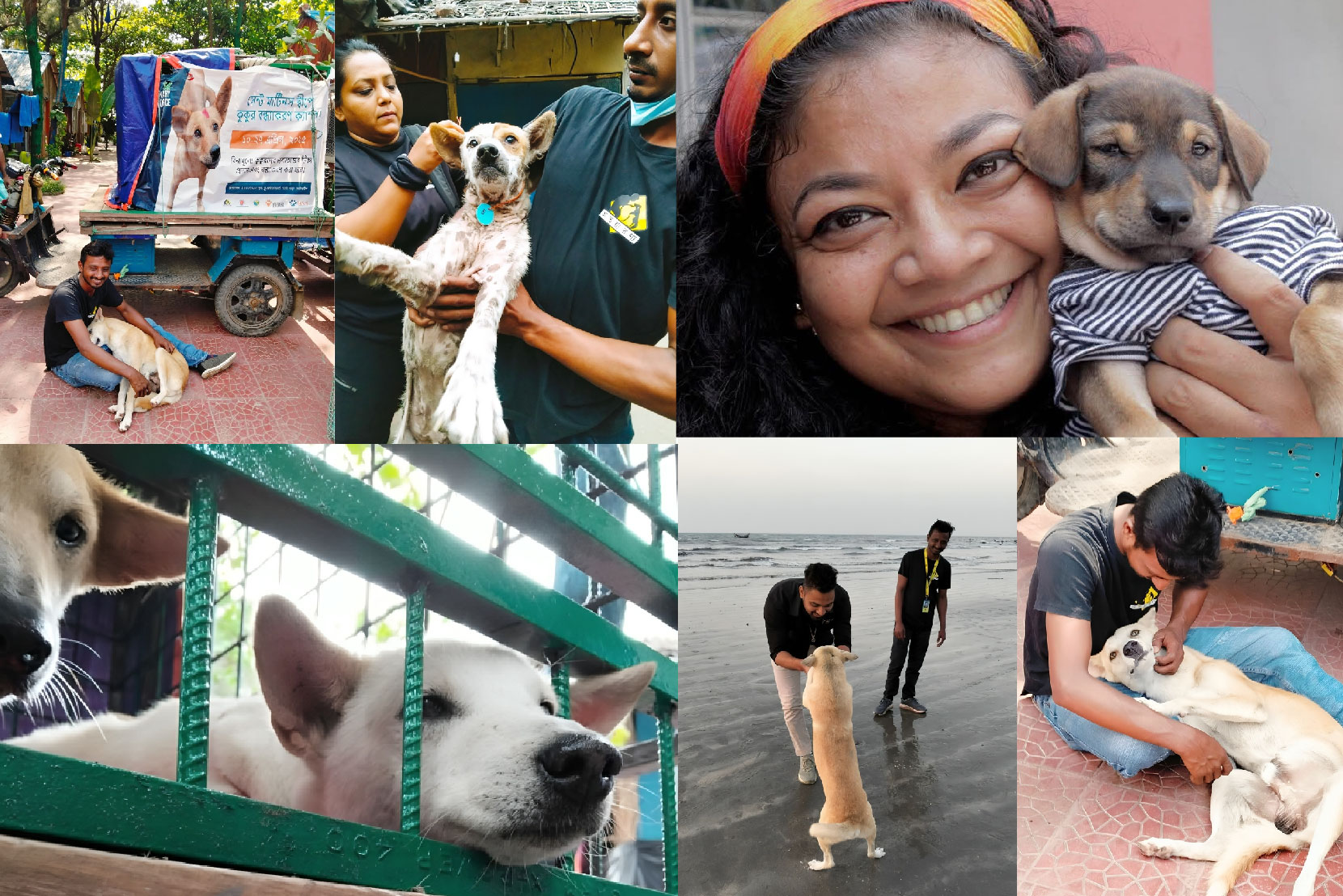The production of dairy in Bangladesh is not one to be grazed lightly; the nation houses the 15th largest dairy cow population in the world. According to IDLC, we have more than tripled our production of dairy products from 2.3 million tons (2006-07) to 7.3 million (2016-17). Nevertheless, the 45.8% deficiency per head leaves one wondering if we are utilizing the potentials of the white industry. The social innovators at BRAC Dairy are breaking the supply chains of the sector by eliminating the middleman and empowering farmers through training and knowledge. ICE Business Times converses with Mohammad Anisur Rahman, Director of BRAC Dairy and Food, on making every liter count.
Every Drop Creates a Ripple
Maintaining the quality of milk in most developed nations proves to be much simpler given that it is single sourced or obtained from a number of large farms. Anisur acknowledges the small dairy farmers are the foundation of BRAC Dairy, “Our farmers are scattered across half the country because the country does not have any large dairy farm to produce milk. Collecting the milk and maintaining quality until it is processed is a challenge for us. We train our farmers to collect milk in a timely manner in order for it to be transported to our chilling centers immediately after. We train our farmers and teach them these safe and quality milking ways and how to preserve the quality of the milk immediately after milking.” BRAC Dairy has 28,000 dedicated farmers; 70% of BRAC Dairy’s milk comes from the Rangpur and Rajshahi divisions. The enterprise currently works in the Khulna region of South Bengal and plan to expand in those regions. Anisur explains that they focus on the north because there are not many industries there, “The reason for choosing the north Bengal divisions was because they were poverty-stricken areas. Cultivation is the primary earning source for the families. Since we work with the marginal farmers, we saw a large concentration of marginal farmers in the northern belt of the country. We worked on changing landless or homestead farmers into dairy farming and connecting them into the mainstream milk markets.”
The social enterprise, directly and indirectly, provides training and extension services to its farmers. Nevertheless, Anisur understands the limitations of maintaining such a large dispersed group, “We are able to directly reach about 35% of our farmers right now with all of our services. Training is facilitated in our centers to farmers of that region. It includes knowledge and best practices for breed development, veterinary services, animal husbandry, and preserving the best quality of milk. The farmers then extend their learnings to the farmers we are not able to reach in the form of a farmer’s society.”
“Traditionally cattle rearing and animal husbandry are done by women while men oversee the commercial aspects such as selling milk in the market. If 9 out of every 10 cattle are taken care of by women, we did not see why they could not become the lead farmers.”
Bull’s Eye Compliance
BRAC Dairy is the first dairy company in Bangladesh to receive an ISO 22000 certification. They continually maintain quality at every step of the process and thus yield a standard and diverse portfolio of products. Anisur ensures that the 150,000 liters of milk they collected everyday meets BRAC Dairy’s parameters prior to any processing, “Quality control is essential at every step of processing a food product as sensitive as dairy. It starts with an inspection before the milk enters the chilling centers. We transport the chilled milk through bulk tanks to our processing centers where they are inspected again in order to ensure that it had not spoiled during the transport process. The milk is subjected to a round of quality test prior to being collected into the factory. It only enters the factory if parameters are satisfied.”
The company tackles the challenges through the advent of technology, supporting their farmers at every step. Anisur elaborates that their many stations facilitate the collection, “We have 103 chilling centers to collect milk from our farmers. Furthermore, the 20 satellite collection stations and 67 collection spots assure farmers that they can deposit their collection without the stress of traveling.” The company is currently piloting chilling technologies that will work for up to two days without electricity. The introduction of this technology to the centers would allow for maintenance of products regardless of unreliable electricity connection or generators. The chilled milk is then transported through insulated milk tankers to the processing plant once the quality checks are completed.
It is then transferred into silos from where the pasteurization and standardization process takes place. The range of drinks, powdered milk and butter products are all produced in their factories. Anisur equates maintenance of the dairy to the trained professional who maintains preservation of quality at every step, “We have individuals that monitor parameters at every stage of processing. We will discard any product that does not meet quality standards set by BSTI and related regulatory authorities. And this practice continues post-production. Our cold chain products are preserved in cold rooms where temperatures are controlled. The non-cold chain products are stored in our warehouses until they are delivered to the retailers.”
Never Skimming on Equality
Starting nearly 20 years ago, BRAC Dairy not only works on bettering practices, they are a female-centered organization that challenge dynamics of gender roles. Anisur recalls that the journey to a workforce consisting of 39% female farmers, “Traditionally cattle rearing and animal husbandry are done by women while men oversee the commercial aspects such as selling milk in the market. If 9 out of every 10 cattle are taken care of by women, we did not see why they could not become the lead farmers.”
The company started working with female farmers because they wanted to encourage the birth of entrepreneurs in households where there was no source of income. Anisur believes that the lead by example method instills a progressive mindset, “We worked with the BRAC Microcredit program in order expand. These women would tell their stories at meetings and inspire others. Given that our microcredit interventions run in rural areas, this empowered women and encouraged them to buy cattle. We would enlist these women as BRAC Dairy farmers and guarantee that selling milk would be a sustainable source of income.”
Anisur was particularly inspired when he visited a woman in Sirajganj, “We went with a number of BRAC personals and foreign visitors. I met a female farmer who has a daughter in fifth grade. When I asked her about her future visions for her daughter. She pointed to me and said I will work relentlessly until she becomes an officer like yourself.” He believes that individuals who aspire despite their odds are what keeps BRAC’s social enterprises expanding their reach across the nation.
“We are able to directly reach about 35% of our farmers right now with all of our services. Training is facilitated in our centers to farmers of that region. It includes knowledge and best practices for breed development, veterinary services, animal husbandry, and preserving the best quality of milk. The farmers then extend their learnings to the farmers we are not able to reach in the form of a farmer’s society.”
The Shelf Life of the Sector Depends on the Nation
Bangladesh produces approximately 18 million liters of milk per day, nonetheless, poor linkage leads to a mere 1.8 million liters of this production from farmers to packaging companies. Anisur establishes that lack of competitiveness is a principal factor to limited growth, “When you compete in an open market economy, and the concept of products competing with those being imported incentivizes this. Moreover, the lack of competition amongst local producers diminishes the interest of farmers because they will not earn according to their share.” He further illustrates that the nation has a massive population with small amounts of milk being collected from a large number of sources; this makes collection expensive and is not economically feasible. Anisur also points that the sector requires notable investment and that the government can support this in two ways, “The government needs to discover scopes to create a more competitive industry. They also need to work on protecting the interest of farmers. The dairy industry is very sensitive and if we do not plan to protect the local industry as many other nations it will fail to thrive.”
In the case of dairy, there is a continual demand and that is apparent in the increase of imported powdered milk; in 2007 only 24,000 tons were imported and that number increase to 130,000 tons in 2016 according to the Bangladesh Bureau of Statistics. Anisur infers that competition will be the driving force of cost, “When you can buy imported milk for nearly the same cost, most customers will purchase the imported product. Productivity will increase with competition. When you produce ten liters with the production cost of two, the overall price of the product goes down. We will only see this dynamic in play when there are noteworthy contenders in the market.”
In order to generate the interest of the private sector, the dairy industry needs to show foreseeable profits. Anisur deciphers that investment in the dairy industry is quite different from other, “With dairy investors will not see an immediate profit, an operative dynamic of other agro or food-related industries. The private sector has these limitations because they must justify the investments they are making out of their own pockets.” Financing the growth of any sector requires the advent of technology. If proper technical knowledge and new technologies are applied, the dairy sector and processing can proliferate like it has in many other nations. BRAC Dairy is creating advancements within its own company as Anisur points out, “We are working on artificial insemination and breed development to yield a cow that will produce more milk. Our services extend to veterinary services, training farmers on better breeding, animal husbandry, and nutrition for cows. Our holistic approach is for the overall sectoral productivity in order to make the local dairy market more competitive. We want to encourage practices that increase competitiveness to combat the increasing dependence on imports.” He emphasizes that private sectors are too small to usher visible impact without the government’s support; they need to play an active role to protect dairy farmers and the dairy industry for long-term competitiveness and sustainability.
Tractor Speed Ahead
BRAC Dairy plans to create a second state of the art processing plant in North Bengal. Anisur and his team are strategizing construction in Bogura or Shirajgonj, “Expanding our reach in the north would multiply with the plant. We transport 115,000 liters of milk from North Bengal on a daily basis and it may take up to 36 hours to reach Gazipur. This increases the chances of spoiling; the new plant would process and export the product to the retailer from a much closer vicinity.”















